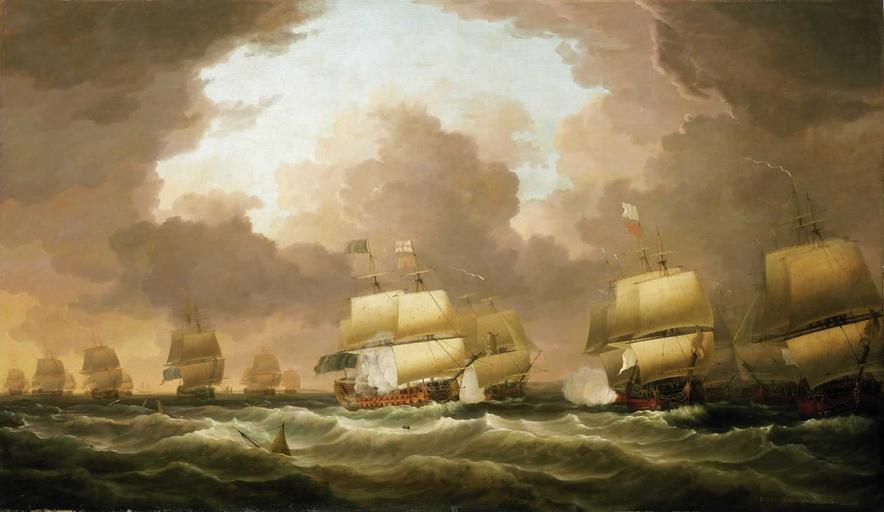MAKE A MEME
View Large Image

| View Original: | The_Battle_of_Quiberon_Bay.jpg (2000x1159) | |||
| Download: | Original | Medium | Small | Thumb |
| Courtesy of: | commons.wikimedia.org | More Like This | ||
| Keywords: The Battle of Quiberon Bay.jpg The Battle of Quiberon Bay on 20 November 1759 was the most decisive naval encounter during the Seven Years War 1756-63 a conflict involving the major European colonial powers and fought around the globe France had been at war with Britain since 1756 her position in Canada India and the West Indies was on the point of collapse and in Europe she faced stalemate against Prussia which received British support The battle resulted in the destruction of the French Brest fleet and occurred when the French broke out of the five-month English blockade of Brest In an attempt to solve her problems the French planned to land an army of 20 000 men in Ireland This force was assembled largely in the gulf of Morbihan in southern Brittany under the Duc d'Aiguillon and was to be escorted by the Brest fleet under Admiral de Conflans Admiral Sir Edward Hawke's Channel Fleet blockaded Brest to prevent the French leaving to collect the troop transports but during a gale in the first week of November Hawke's ships were forced to run for shelter in Torbay giving de Conflans the chance to escape On hearing that the French had done so Hawke went in pursuit and on 20 November sighted him 20 miles out to sea De Conflans relying on local knowledge ordered his fleet to take refuge in Quiberon Bay south of Morbihan assuming Hawke would not follow both because night was quickly coming on and when he saw the area was one of ill-charted rocks reefs and wild seas This was a miscalculation for Hawke relentlessly pursued him into the bay losing two of his own ships on the outer reefs but sinking the French 'Thesee' outright and otherwise decimating de Conflans' force in what became an action practically in the dark The French flagship ˜Soleil Royal ™ went aground in the bay near Le Croisic and was burnt the following day Others were captured and of the few which managed to escape into the mouth of the River Vilaine all were trapped for months and one more lost by grounding This action stopped any French plans to invade Britain during the Seven Years War The famous naval song 'Hearts of Oak' was composed to commemorate the battle which was fought so close inshore that contemporary accounts reported that 10 000 persons watched it from the coast <br/><br/> This painting shows Hawke's 'Royal George' in the middle with his squadronal colour as Admiral of the Blue at the mainmast de Conflans' 'Soleil Royal' correctly shown as a two-decker with white at the main above a red flag is second from the right Serres painted a larger version of this composition in 1766 also previously in the Museum but disposed of as a duplicate in 1995 This one dated 1779 was painted for Captain William Locker a protege of Hawke's who was a lieutenant in the 'Sapphire' at Quiberon Bay and became a considerable patron of artists Serres in particular From 1793 just after the start of the French Revolutionary War he was Lieutenant-Governor of Greenwich Hospital for Seaman and presented this picture to it in June that year In 1795 he also proposed that the Hospital's Painted Hall be turned into a national gallery of naval art This got no further at the time but in 1824 was carried into effect in 1824 by his son Edward Hawke Locker then the Hospital Secretary 1779 oil on canvas cm 114 3 182 8 National Maritime Museum http //collections rmg co uk/collections/objects/11892 html Royal Museums Greenwich object history credit line National Maritime Museum Greenwich London Greenwich Hospital Collection accession number BHC0400 http //www nmm ac uk/collections/explore/object cfm ID BHC0400 picture 1 content National Maritime Museum Greenwich PD-old-100-1923 Battle of Quiberon Bay Dominic Serres Paintings in the National Maritime Museum London 1779 paintings | ||||